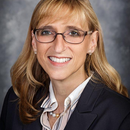How Can Tech and Process Help Senior Care Mitigate Staff Shortages?
“COVID-19 accelerated the chronic staff shortages in aging services. At the same time, technology can automate repetitive tasks and drive efficiencies if processes are streamlined,” said Majd Alwan, senior vice president of technology and business strategy at LeadingAge and executive director for the LeadingAge Center for Aging Services Technologies.
However, technology alone is not enough, according to Steven VanderVelde, director of senior living partnerships at ProviNET Solutions. He explained that organizations must have a strategic IT plan in place that fits into their overall strategic plans. A technology partner can help organizations to adapt their plans to meet their specific needs.
Travis Gleinig, CIO of United Methodist Communities, recommended that senior care organizations partner with vendors that have the same strategic vision. In addition, leaders should start with a three-year plan to stay flexible.
“There have been several technologies released in the past 18 months that have been game changers,” he said. “If you’re stuck in a plan, you might find yourself in technical debt and unable to adapt.”
DISCOVER: Best practices for digital transformation in senior care.
When putting together a strategic IT plan, it’s important to include all stakeholders in the process, including residents and staff.
To support these strategic IT plans and investments, senior care organizations need a strong network infrastructure in place. Having robust connectivity throughout a campus, rather than just in common areas, is beneficial for both residents and staff, as strong Wi-Fi and the appropriate level of bandwidth can support devices and technologies to improve experiences, health and workflows.
Once the plan and supporting technology is in place, senior care organizations can begin implementing technologies and processes to better support existing staff. Gleinig suggested that organizations look at technology grants to assist in funding implementations.
His organization implemented the VSTAlert system from VirtuSense to reduce falls. As a result, he said, falls resulting in injury decreased 71 percent. The solution made fall prevention more efficient and effective and improved nurses’ ability to care for patients, according to Gleinig.
Creating a dedicated resident IT services role, or a tech concierge, takes the pressure to answer resident questions off of staffers, freeing them up to focus on their planned tasks.
Thrive Innovation Center CEO Sheri Rose added that, while not new, virtual reality is making a difference in training the workforce, with some solutions showcasing how seniors or people with disabilities may experience the world to create more compassion in senior care staff.
How Data Analytics Can Transform Post-Acute Care Workflows
“The past two years have been unbelievable as far as staffing resources. Nurses are being asked to do more with less, and they’re burned out,” said Kathy Derleth, senior clinical account manager at Real Time Medical Systems. “How can we make life easier for staff members’ everyday workflows?”
She suggested focusing on a replicable strategy, namely, reducing the administrative burden with data analytics.
Angela Huffman, vice president of clinical services at Affinity Health Services said that, using a data analytics platform, her organization was able to “work smarter, not harder by leveraging technology to enable staff to be the best they can be.”
A data analytics platform can data mine and bring forward relevant information about which patients need additional care. Huffman explained that the solution reduced paperwork and time spent by nursing staff combing through volumes of paper records every day. This streamlined the process for morning meeting prep and shortened meeting times, allowing the clinical team to establish new care plans quickly and prevent hospitalization or infection.














